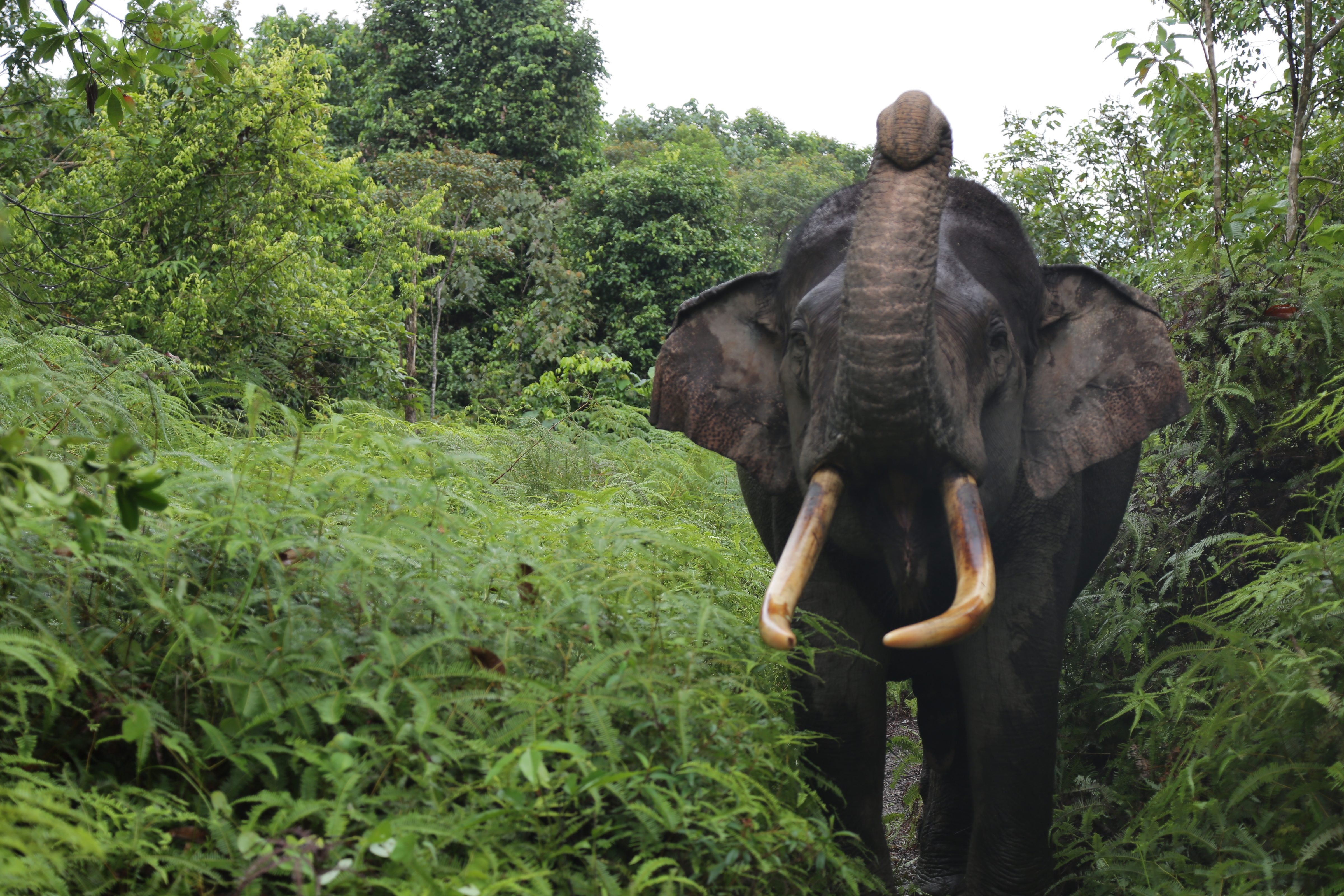BEHIND THE STORY OF GPS SATELLITE COLLAR INSTALLATION
By: Natalia Trita Agnika
"After the wild elephant is sedated and it shows signs of sleep, the GPS Satellite Collar is attached to its neck," said Nazaruddin when explaining how the GPS Satellite Collar is attached to wild elephants in Sumatra. Nazaruddin is the coordinator of mahout (elephant trainers) throughout Indonesia. He is also the initiator of the Elephant Response Unit (ERU), a team that trains elephants to help residents ward off wild elephants that want to enter farmland.
The process of installing a GPS Satellite Collar is not an easy one. Before installation, the team must first survey the group of wild elephants to be fitted with the GPS Satellite Collar. They identify which female elephants are dominant and how many elephants are in a group.
Once the herd leader is identified, the team will break up the elephant group to anesthetize the herd leader. There are three teams involved in the GPS installation. The first team is the execution team that carries the tranquilizer gun. They are the closest to the elephant. Then there is a second team of veterinarians and forest rangers who wait from a distance. They carry the rope and GPS equipment. Then the third team is the logistics team that carries the refreshments.
"When drugged, in the 'fly' condition, we try to keep the elephant standing for its safety. Before being drugged, the natural conditions must also be considered, whether near a cliff or not, so as not to endanger the elephant," Nazaruddin explained. "When we have finished installing the GPS and administering the anesthetic, we cannot leave immediately. The team has to make sure the elephant is fully conscious and recovered and returns to the herd," added the mahout who often provides training on elephants to India and Myanmar.
The process of fitting a GPS Satellite Collar to a wild elephant also provides another benefit, namely information on the elephant's weight. Wow, how do you measure the weight of an elephant? Is the elephant weighed? It turns out that an elephant's weight can be determined using a formula. Through the chest circumference while exhaling and the elephant's height, mahout can determine the elephant's weight by calculating through a certain formula.
One of the GPS Satellite Collars that has been installed by Nazaruddin was donated by singer Tulus and the public through the #Do Not Kill Elephants campaign which was handed over to WWF-Indonesia in 2016. The GPS Satellite Collar is very useful for monitoring and providing accurate information on the presence and movement of wild elephants in the Bukit Barisan Selatan National Park (TNBBS). Tulus is still fundraising for the GPS Satellite Collar through the #TemanGajah campaign by collaborating with more parties, from children to adults. The public can provide support through www.kitabisa.com/temangajah. Later, when donations have been collected, GPS Satellite Collars will be installed on other wild elephants.
The advantage of installing a GPS Satellite Collar is that it can monitor the whereabouts of wild elephants. "The installation of GPS collars does not resolve conflicts but facilitates conflict handling. Conflict handling that we can do is through early detection. However, whatever we do, it all comes back to the role of the UPT (Technical Implementation Unit)," said Nazaruddin. Currently the existence of patrol teams such as the Flying Squad and ERU has an important role, but still needs firm support from the government.
Closing the story about the installation of the GPS Satellite Collar, Nazaruddin also gave a message, "If we want to help protect elephants, don't want to use items made from elephant ivory, bones, etc."





